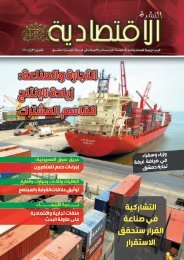SECURITY TABLE 3.13 CONVENTIONAL WEAPONS DESTRUCTION PROGRAM METRICS, FISCAL YEARS 2010–2016 Fiscal Year Minefields Cleared (m 2 ) AT/AP Destroyed UXO Destroyed SAA Destroyed Fragments Cleared Estimated Contaminated Area Remaining (m 2 )* 2010 39,337,557 13,879 663,162 1,602,267 4,339,235 650,662,000 2011 31,644,360 10,504 345,029 2,393,725 21,966,347 602,000,000 2012 46,783,527 11,830 344,363 1,058,760 22,912,702 550,000,000 2013 25,059,918 6,431 203,024 275,697 10,148,683 521,000,000 2014 22,071,212 12,397 287,331 346,484 9,415,712 511,600,000 2015 12,101,386 2,134 33,078 88,798 4,062,478 570,800,000 2016 27,856,346 6,493 6,289 91,563 9,616,485 607,600,000 TOTAL 204,854,306 63,668 1,882,276 5,857,294 82,461,642 607,600,000 Note: AT/AP = anti-tank/anti-personnel ordnance. UXO = unexploded ordnance. SAA = small-arms ammunition. Fragments are reported because their clearance requires the same care as for other objects until their nature is determined. There are about 4,047 square meters (m 2 ) to an acre. * Total area of contaminated land fluctuates as clearance activities reduce harzardous areas while ongoing survey identifies and adds new contaminated land in the Information Management System for Mine Action (IMSMA) database. Source: PM/WRA, response to <strong>SIGAR</strong> data call, 12/27/2016; PM/WRA, response to <strong>SIGAR</strong> vetting, 1/6/2017. State directly funds five Afghan nongovernmental organizations (NGOs), four international NGOs, and one U.S. government contractor. These funds enable clearing areas contaminated by explosive remnants of war (ERW) and support clearing conventional weapons used by insurgents to construct roadside bombs and other improvised-explosive devices. As of September 30, 2016, State-funded implementing partners have cleared approximately 205 million square meters of land (approximately 79 square miles) and removed or destroyed approximately 7.8 million landmines and other ERW such as unexploded ordnance (UXO), abandoned ordnance (AO), stockpiled munitions, and homemade explosives since 2002 (see Table 3.13). 375 In addition, survey and clearance are still needed on 63 firing ranges belonging to ISAF/NATO covering an area of 162.3 square kilometers (62.7 square miles). From December 2012 to June 2016, 40 hazards and a total area of 1,109 square kilometers (428.2 square miles) were cleared on ISAF/NATO firing ranges. 376 The estimated total area of contaminated land continues to fluctuate as clearance activities reduce hazardous areas, while ongoing survey activities find new contaminated land. At the beginning of this quarter, there were 598 square kilometers (231 square miles) of contaminated minefields and battlefields. During the quarter, six square kilometers (2.3 square miles) were cleared though the discovery of additional hazardous areas brought the known contaminated area to 607 square kilometers (234.4 square miles) by the end of the quarter. PM/WRA defines a minefield as the area contaminated by landmines, whereas a contaminated area can include both landmines and other ERW. 377 USAID, in partnership with the UN Mine Action Centre for Afghanistan (UNMACA), provides services for victims and survivors of mines and ERW, 116 SPECIAL INSPECTOR GENERAL I AFGHANISTAN RECONSTRUCTION
SECURITY as well as for civilians affected by conflict and persons with disabilities, through the Afghan Civilian Assistance Program (ACAP). The goal of this project is to mitigate the short-term and long-term impact of conflict on civilians, including victims of mines and ERW. 378 UNMACA draws on its wider network under the Mine Action Programme of Afghanistan (MAPA), which consists of 50 international and national organizations, to access beneficiaries and communities. One of those organizations, the Mine Action Coordination Centre of Afghanistan (MACCA), collects casualty data on mine/ERW victims to help prioritize its clearance activities. According to USAID, ACAP funding will allow MACCA to expand its victim-assistance activities beyond service provision and data collection to include immediate assistance for individual survivors and their families. 379 The number of deminers working in MAPA total around 9,700, of which 99% are Afghan nationals. The high number of individuals involved with demining makes Afghanistan one of the world’s largest mine action programs, with the most coverage on the ground. Less than 1% of all security-related incidents targeted the demining community since 2009. 380 Between July and September 2016, MAPA reports the over 5,300 civilian victims received assistance and disability support services. The total number of beneficiaries since 2007 is 421,856. 381 Since January, the UN and mine action partners have provided risk education regarding mines and ERW to over 466,000 returnees from Pakistan. 382 The $30.2 million ACAP program has expended $19.6 million to date and will conclude in February 2018. 383 According to the UN, the security situation deteriorated significantly between January and October 2016, with incidents reaching the highest level since reporting began in 2007. Of nearly 6,300 security incidents between August 16 and November 17, 2016, 18% were improvised explosive devices (IEDs)—the second most prevalent form of attack after armed attacks. 384 Many of the IEDs used by today’s insurgents are much more powerful and cause greater bodily harm than previous IEDs. Disabled war victims are more often double rather than single amputees, as was more common a decade ago. 385 REPORT TO THE UNITED STATES CONGRESS I JANUARY 30, 2017 117
- Page 1 and 2:
SIGAR JAN Special Inspector General
- Page 3 and 4:
JOWZJAN BALKH KUNDUZ TAKHAR BADAKHS
- Page 5 and 6:
This quarter, SIGAR issued 13 audit
- Page 7 and 8:
EXECUTIVE SUMMARY • the abandonme
- Page 9 and 10:
TABLE OF CONTENTS SECTION 4 203 OTH
- Page 11 and 12:
1AFGHAN PROCUREMENT REFORM 1
- Page 13 and 14:
AFGHAN PROCUREMENT REFORM THE NEED
- Page 15 and 16:
AFGHAN PROCUREMENT REFORM from ente
- Page 17 and 18:
AFGHAN PROCUREMENT REFORM Conflict:
- Page 19 and 20:
AFGHAN PROCUREMENT REFORM that alth
- Page 21 and 22:
AFGHAN PROCUREMENT REFORM system fr
- Page 23 and 24:
AFGHAN PROCUREMENT REFORM identify
- Page 25 and 26:
AFGHAN PROCUREMENT REFORM THE STAKE
- Page 27 and 28:
2 SIGAR OVERSIGHT 17
- Page 29 and 30:
SIGAR OVERSIGHT ACTIVITIES SIGAR OV
- Page 31 and 32:
SIGAR OVERSIGHT ACTIVITIES on TFBSO
- Page 33 and 34:
SIGAR OVERSIGHT ACTIVITIES Performa
- Page 35 and 36:
SIGAR OVERSIGHT ACTIVITIES were pro
- Page 37 and 38:
SIGAR OVERSIGHT ACTIVITIES Financia
- Page 39 and 40:
SIGAR OVERSIGHT ACTIVITIES 1. Deter
- Page 41 and 42:
SIGAR OVERSIGHT ACTIVITIES is now t
- Page 43 and 44:
SIGAR OVERSIGHT ACTIVITIES Review L
- Page 45 and 46:
SIGAR OVERSIGHT ACTIVITIES indefini
- Page 47 and 48:
SIGAR OVERSIGHT ACTIVITIES their co
- Page 49 and 50:
SIGAR OVERSIGHT ACTIVITIES communit
- Page 51 and 52:
SIGAR OVERSIGHT ACTIVITIES advocate
- Page 53 and 54:
SIGAR OVERSIGHT ACTIVITIES remote o
- Page 55 and 56:
SIGAR OVERSIGHT ACTIVITIES The Cour
- Page 57 and 58:
SIGAR OVERSIGHT ACTIVITIES at both
- Page 59 and 60:
SIGAR OVERSIGHT ACTIVITIES restitut
- Page 61 and 62:
QUARTERLY HIGHLIGHT Louis M. Bailly
- Page 63 and 64:
SIGAR OVERSIGHT ACTIVITIES FIGURE 2
- Page 65 and 66:
QUARTERLY HIGHLIGHT Suspensions and
- Page 67 and 68:
QUARTERLY HIGHLIGHT appealed a susp
- Page 69 and 70:
SIGAR OVERSIGHT ACTIVITIES the Unit
- Page 71 and 72:
SIGAR OVERSIGHT ACTIVITIES identify
- Page 73 and 74:
3RECONSTRUCTION UPDATE 63
- Page 75 and 76: RECONSTRUCTION UPDATE RECONSTRUCTIO
- Page 77 and 78: RECONSTRUCTION UPDATE that project
- Page 79 and 80: STATUS OF FUNDS STATUS OF FUNDS To
- Page 81 and 82: STATUS OF FUNDS Security Forces Fun
- Page 83 and 84: STATUS OF FUNDS Congress appropriat
- Page 85 and 86: STATUS OF FUNDS ASFF BUDGET ACTIVIT
- Page 87 and 88: STATUS OF FUNDS USAID INCLE State A
- Page 89 and 90: DOD STATUS OF FUNDS CERP DOD DOD DR
- Page 91 and 92: DOD STATUS OF FUNDS ESF USAID INTER
- Page 93 and 94: STATUS OF FUNDS the United Kingdom
- Page 95 and 96: SECURITY SECURITY KEY ISSUES AND EV
- Page 97 and 98: SECURITY FIGURE 3.26 AVERAGE NUMBER
- Page 99 and 100: SECURITY investigation concluded th
- Page 101 and 102: SECURITY USFOR-A determined that
- Page 103 and 104: SECURITY System for the ANA’s Nat
- Page 105 and 106: SECURITY FIGURE 3.27 RS TRAIN, ADVI
- Page 107 and 108: SECURITY DOD reported the ASSF in b
- Page 109 and 110: SECURITY TABLE 3.8 ANDSF ASSIGNED F
- Page 111 and 112: SECURITY function without Coalition
- Page 113 and 114: SECURITY international scholarships
- Page 115 and 116: SECURITY TABLE 3.10 COST OF U.S.-FU
- Page 117 and 118: SECURITY Utility in Kabul ($314,325
- Page 119 and 120: SECURITY An AAF specialist adjusts
- Page 121 and 122: SECURITY According to USFOR-A, the
- Page 123 and 124: SECURITY A Women’s Participation
- Page 125: SECURITY announcement has provoked
- Page 129 and 130: GOVERNANCE GOVERNANCE KEY ISSUES AN
- Page 131 and 132: GOVERNANCE U.S. RECONSTRUCTION FUND
- Page 133 and 134: GOVERNANCE TABLE 3.14 USAID ON-BUDG
- Page 135 and 136: GOVERNANCE the ARTF is the largest
- Page 137 and 138: GOVERNANCE Of 59 conditions defined
- Page 139 and 140: GOVERNANCE TABLE 3.15 USAID CAPACIT
- Page 141 and 142: GOVERNANCE independent news and pub
- Page 143 and 144: GOVERNANCE ministry of municipal af
- Page 145 and 146: GOVERNANCE In January, the Wall Str
- Page 147 and 148: GOVERNANCE TABLE 3.17 RULE OF LAW A
- Page 149 and 150: GOVERNANCE ADALAT found in the cour
- Page 151 and 152: GOVERNANCE without proper vetting o
- Page 153 and 154: GOVERNANCE to the absence of design
- Page 155 and 156: GOVERNANCE TABLE 3.18 USAID GENDER
- Page 157 and 158: GOVERNANCE service is organized on
- Page 159 and 160: ECONOMIC AND SOCIAL DEVELOPMENT ECO
- Page 161 and 162: ECONOMIC AND SOCIAL DEVELOPMENT Agr
- Page 163 and 164: ECONOMIC AND SOCIAL DEVELOPMENT TAB
- Page 165 and 166: ECONOMIC AND SOCIAL DEVELOPMENT $7.
- Page 167 and 168: ECONOMIC AND SOCIAL DEVELOPMENT reg
- Page 169 and 170: ECONOMIC AND SOCIAL DEVELOPMENT FIG
- Page 171 and 172: ECONOMIC AND SOCIAL DEVELOPMENT qua
- Page 173 and 174: ECONOMIC AND SOCIAL DEVELOPMENT ins
- Page 175 and 176: ECONOMIC AND SOCIAL DEVELOPMENT are
- Page 177 and 178:
ECONOMIC AND SOCIAL DEVELOPMENT dis
- Page 179 and 180:
ECONOMIC AND SOCIAL DEVELOPMENT Pow
- Page 181 and 182:
ECONOMIC AND SOCIAL DEVELOPMENT Cit
- Page 183 and 184:
ECONOMIC AND SOCIAL DEVELOPMENT Wor
- Page 185 and 186:
ECONOMIC AND SOCIAL DEVELOPMENT A s
- Page 187 and 188:
ECONOMIC AND SOCIAL DEVELOPMENT to
- Page 189 and 190:
ECONOMIC AND SOCIAL DEVELOPMENT TAB
- Page 191 and 192:
ECONOMIC AND SOCIAL DEVELOPMENT TAB
- Page 193 and 194:
ECONOMIC AND SOCIAL DEVELOPMENT wit
- Page 195 and 196:
COUNTERNARCOTICS COUNTERNARCOTICS K
- Page 197 and 198:
COUNTERNARCOTICS opium-poppy cultiv
- Page 199 and 200:
COUNTERNARCOTICS UNODC estimates th
- Page 201 and 202:
COUNTERNARCOTICS The program pays a
- Page 203 and 204:
COUNTERNARCOTICS remained the top o
- Page 205 and 206:
COUNTERNARCOTICS Community Based Ag
- Page 207 and 208:
COUNTERNARCOTICS activities include
- Page 209 and 210:
COUNTERNARCOTICS in 2016 at an addi
- Page 211:
COUNTERNARCOTICS TABLE 3.6 INTERDIC
- Page 214 and 215:
OTHER AGENCY OVERSIGHT CONTENTS OTH
- Page 216 and 217:
OTHER AGENCY OVERSIGHT COMPLETED OV
- Page 218 and 219:
OTHER AGENCY OVERSIGHT U.S. Departm
- Page 220 and 221:
OTHER AGENCY OVERSIGHT Audit of Afg
- Page 222 and 223:
OTHER AGENCY OVERSIGHT equipment su
- Page 224 and 225:
APPENDICES AND ENDNOTES CONTENTS Ap
- Page 226 and 227:
APPENDICES APPENDIX A CROSS-REFEREN
- Page 228 and 229:
APPENDICES TABLE A.1 (CONTINUED) CR
- Page 230 and 231:
APPENDICES TABLE A.2 CROSS-REFERENC
- Page 232 and 233:
APPENDICES APPENDIX B U.S. FUNDS FO
- Page 234 and 235:
APPENDICES APPENDIX C SIGAR WRITTEN
- Page 236 and 237:
APPENDICES Ongoing Financial Audits
- Page 238 and 239:
APPENDICES APPENDIX D SIGAR INVESTI
- Page 240 and 241:
APPENDICES TABLE D.1 SPECIAL ENTITY
- Page 242 and 243:
APPENDICES TABLE D.1 (CONTINUED) SP
- Page 244 and 245:
APPENDICES TABLE D.1 (CONTINUED) SP
- Page 246 and 247:
APPENDICES ACRONYM OR ABBREVIATION
- Page 248 and 249:
APPENDICES ACRONYM OR ABBREVIATION
- Page 250 and 251:
APPENDICES ACRONYM OR ABBREVIATION
- Page 252 and 253:
ENDNOTES 1. Transparency Internatio
- Page 254 and 255:
ENDNOTES 100. General John Nicholso
- Page 256 and 257:
ENDNOTES 226. RS, email to SIGAR, 1
- Page 258 and 259:
ENDNOTES 380. UNMAS, Afghan Civilia
- Page 260 and 261:
ENDNOTES 483. Voice of America, “
- Page 262 and 263:
ENDNOTES 596. SIGAR, analysis of MO
- Page 264 and 265:
ENDNOTES 698. USAID, OI, response t
- Page 266 and 267:
ENDNOTES 794. UN, Report of the Sec
- Page 268 and 269:
A worker looks down on an Afghan va







